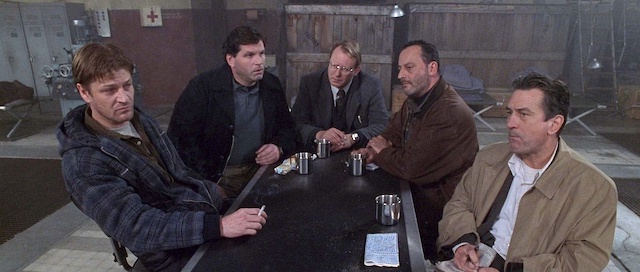Mystery Writing: Mastering the Art of the Detective’s Sidekick Not Just a Fool, But a Tool

Your heart races as you follow the detective’s every action in a mystery, yet another character keeps stealing your attention. That’s right—the detective’s sidekick is often deceptively ordinary yet indispensable to both the detective and the story you’re absorbed in.
You’re the cunning architect of this mystery. Sure, you have a brilliant detective character, but doesn’t it feel like something’s missing? Or someone, perhaps? Here’s your guide to mastering the meticulously understated yet critically important role of the detective’s sidekick in your mystery narrative.
Whether for wit, contrasting insight, or a touch of human naivety, your detective’s sidekick is a powerful narrative tool. You’re about to explore how to shape this secondary character, not just as an accessory to your detective but as an essential element to engage your readers and make your narrative unforgettable.
The Role of the Sidekick in Mystery Writing
Mystery novels have always been a thrilling escape from the mundane, where sharp minds embark on journeys to solve the intricate puzzles of heinous crimes. And who better to accompany our brilliant detective on such an expedition than a loyal sidekick? Understanding their integral presence in mystery narratives paves the path for shaping your compelling character duos.
Sidekicks are instrumental in assisting the detective, not just in their investigations but also in engaging readers. They often act as a reflection or a contrast to the detective’s persona. Consider how Hercule Poirot’s efficient but straightforward assistant, Captain Hastings, accentuates Poirot’s arcane methods in Agatha Christie’s mysteries.
The sidekick’s subtler view of the mystery often makes them the embodiment of comic relief, disarming readers amidst the tense atmosphere, much like the amiable Dr. Watson in Arthur Conan Doyle’s Sherlock Holmes stories, whose bemusement at Holmes’s deductive prowess often mirrors our awe and amusement.
A sidekick also humanizes the detective through their interactions. Nero Wolfe, the detective genius in the novels by Rex Stout, is better understood and relatable through the lens of his sidekick, Archie Goodwin. Archie’s lively banter and average Joe perspective provide depth to Wolfe’s otherwise seemingly inscrutable character.
But the sidekick isn’t just orbiting the detective. They’re proactive and essential; they are the ones who often stumble upon vital clues, putting pieces together for the detective or even solving the mystery themselves. They’re not just there, they’re pivotal to unraveling the story, a fact you, as a writer, must skillfully manipulate to your narrative’s advantage.
In understanding these roles, you possess the key to creating captivating mystery narratives and giving your readers a dynamic duo they’ll cherish long after the final page is turned.
Types of Sidekicks in Mystery Novels
Choosing a sidekick heavily influences the path you forge for your detective. Just as each detective is unique, so are their sidekicks. It’s crucial, as the craftsman of the story, to select the sidekick that best complements your detective.
1. Traditional Sidekick: Rooted in loyalty, the traditional sidekick is often portrayed as the confidante and right-hand man. Consider Sherlock Holmes’ steadfast companion, Dr. John Watson. His unwavering loyalty and trust offer Sherlock more than just assistance; he lends human emotion, acting as a window into Sherlock’s otherwise enigmatic persona.
2. Unorthodox Sidekick: Then there’s the unorthodox sidekick, offering a curveball of unpredictability and uniqueness. In Moira Redmond’s novels, Chef Maurice’s sidekick, Arthur Wordington-Smythe, is not the typical assistant. He is a swineherd with an inherent understanding of pigs, providing a unique viewpoint to the central character that differs from conventional detective-sidekick dynamics.
3. Non-Human Sidekick: Why limit ourselves to the human realm? Non-human sidekicks present an intriguing departure from convention. In Rita Mae Brown’s mysteries, Mrs. Murphy, a clever cat, plays detective alongside her human, Mary Minor Haristeen. This approach can open up fresh perspectives and allow for an imaginative exploration of clues.
Choosing a sidekick is akin to selecting the perfect chess piece; each has strengths and weaknesses, influencing the overall strategy. Become familiar with these classifications, and you’ll find the perfect companion for your detective. The right sidekick introduces intriguing dynamics and truly brings your mystery narrative to life.
Making the Sidekick an Effective Tool in Mystery Writing
As the architect of mystery, the task in your hands is to mold the detective’s sidekick into more than just a supporting character; imbue them with a role that’s instrumental to the narrative. Here’s your toolbox to chisel the perfect sidekick.
1. Crafting Backstory: Engage your readers by crafting an intriguing backstory that deepens the sidekick’s character. For instance, Jack Robinson, Phryne Fisher’s sidekick in Kerry Greenwood’s series, is presented as a First World War veteran. His past experiences impact the solutions, lending his character significant depth.
2. Sidekick’s Contribution: Incorporate versatility in your sidekick’s contributions. From offering comic relief to being a genius second brain like Sherlock’s brother, Mycroft Homes, a sidekick can perform various roles. Make sure to make your sidekick a voice of reason or the carrier of crucial insights that can turn the story around.
3. Narrative Perspective: Consider narrating from the sidekick’s point of view to offer a fresh perspective. Arthur Conan Doyle employed this technique expertly by narrating the Sherlock stories through Dr. Watson’s chronicles. This can reveal elements of the detective’s character that might remain hidden and provide readers with a more intimate connection to the journey.
4. Conflict and Resolution: Utilize the sidekick’s role in establishing or aiding in resolution. Whether it’s professional disputes or personal disagreements like those between Kate Beckett and Richard Castle in the Castle series, these conflicts can drive the story forward and develop characters more deeply.
Molding an effective detective’s sidekick isn’t an art; it’s a skill that depends on your ability to bring each element together seamlessly. Get this rosetta stone right, and your mystery narrative will turn out intriguing and spellbinding.
Enhance Reader Engagement Through the Sidekick
Peeking behind the veil of mystery is undoubtedly thrilling for any reader. Add a charismatic sidekick into the mix, and you’ll find a secret solution to heightening reader engagement. How so, you ask? Let’s unravel this little mystery.
1. Fostering Readers’ Emotional Attachment: A well-crafted sidekick connects readers emotionally. Detective Andrew Ryan’s sympathetic and patient demeanor in Kathy Reichs’ novels brilliantly counterbalances Temperance Brennan’s “human textbook” persona. This complements Brennan’s personality and fosters the readers’ emotional attachment to the duo.
2. Using Sidekick to Drop Clues: Cleverly drop clues through the sidekick—a remark, a random deed, or an observation can set the reader on the path to finding clues themselves. Christie’s Captain Hastings often stumbles blithely upon significant clues, veiling essential plot turns under the guise of amusing diversion for readers.
3. Establishing Relatability: A sidekick is often a relatable character, less shrouded in the mystique that often surrounds a detective. Readers find echoes of their apprehensions, confusions, and triumphs in the sidekick. Dr. Watson is a prime example of a relatable narrator, with his often bewildered yet marvel-struck observations of Sherlock’s brilliance.
Bringing readers closer to your captivating world of mystery isn’t just about the whodunit. It’s also about the characters they journey with, especially the iconic sidekick. In them, readers find a friend, a resource, and a reason to return to your narratives repeatedly. Harness the importance of this unique character and captivate your readers with every turn of the page.
Bringing it All Together
To weave a truly memorable mystery tale, your detective’s sidekick is just as important as the detective. They serve as a narrative bridge, a link that connects readers with the extraordinary elements of a mystery without overstretching their disbelief.
1. Picking the Right Sidekick: Choosing the type of sidekick—traditional, unorthodox, or non-human—should align with your detective’s personality and needs. Remember, they are a narrative mirror of your detective, reflecting their strengths, weaknesses, or what they may lack altogether.
2. Sidekick as an effective tool: The importance of using your sidekick effectively cannot be overstated. From crafting a detailed backstory that brings depth and dimension to their character to using their perspective to advance the narrative, these elements add richness to your storyline.
3. Engaging your reader through the sidekick: The sidekick’s role extends beyond the narrative and into the relationship between the reader and the story. The reader should find elements of relatability in the sidekick’s journey. They’re a guide, offering an intimate understanding of the twists and turns your detective navigates.
4. Drawing lessons from the classics: Examining successful detectives and their sidekicks in literature or television can enrich your understanding. Learning from Sherlock and Watson, Chef Maurice and Arthur, Temperance Brennan, and Andrew Ryan, among others, allows you to discover fundamental aspects contributing to an excellent detective-sidekick relationship.
The sidekick is not just a secondary character who helps the detective solve the crime, but a key player in enhancing your narrative. Through them, you create an emotional lens through which your reader can engage with your detective and the mystery they’re endeavoring to solve. Handle them carefully, and watch as they help your story come to life.
Get the mystery basics to write your novel Enroll in Write A Killer Mystery.




